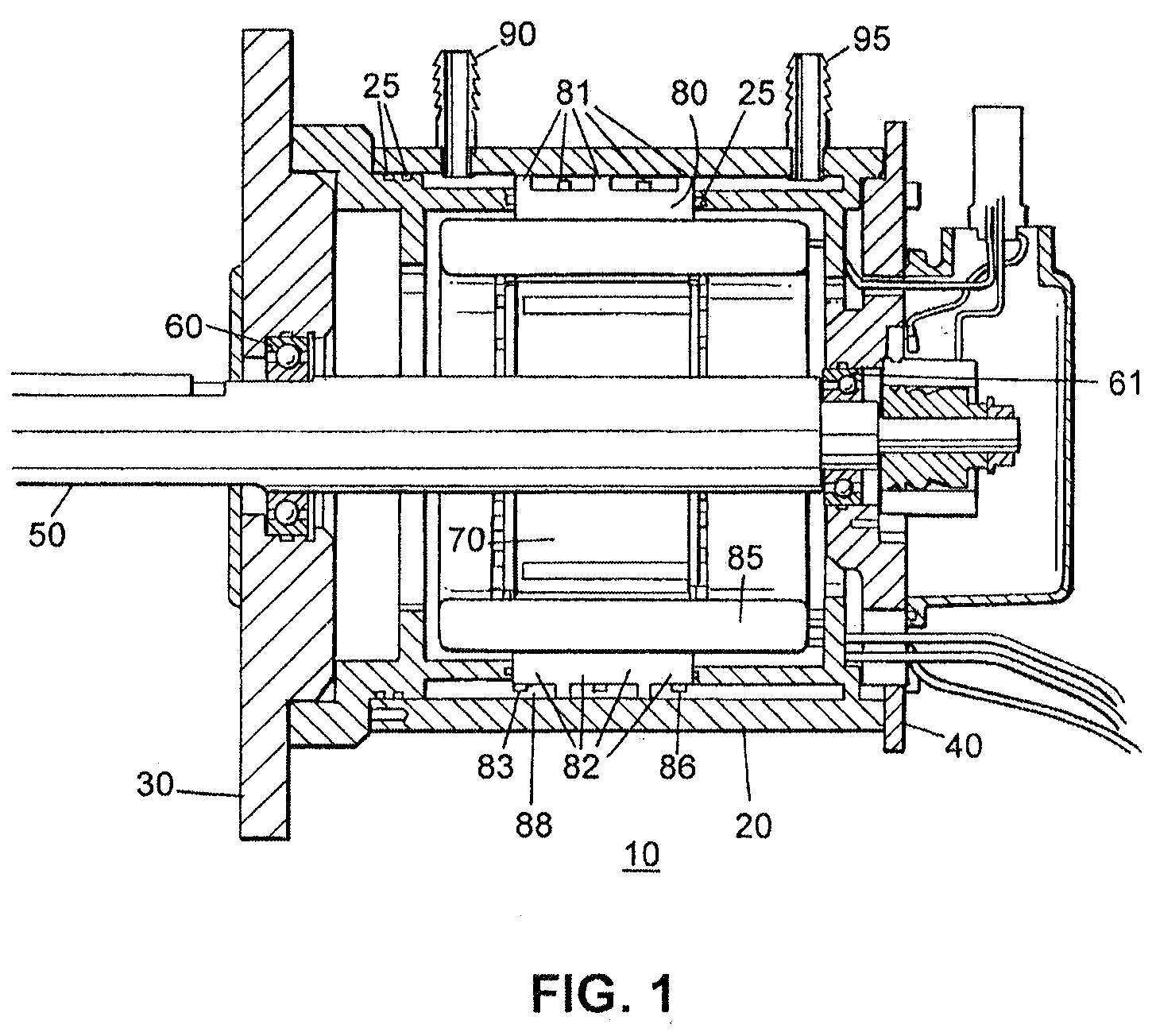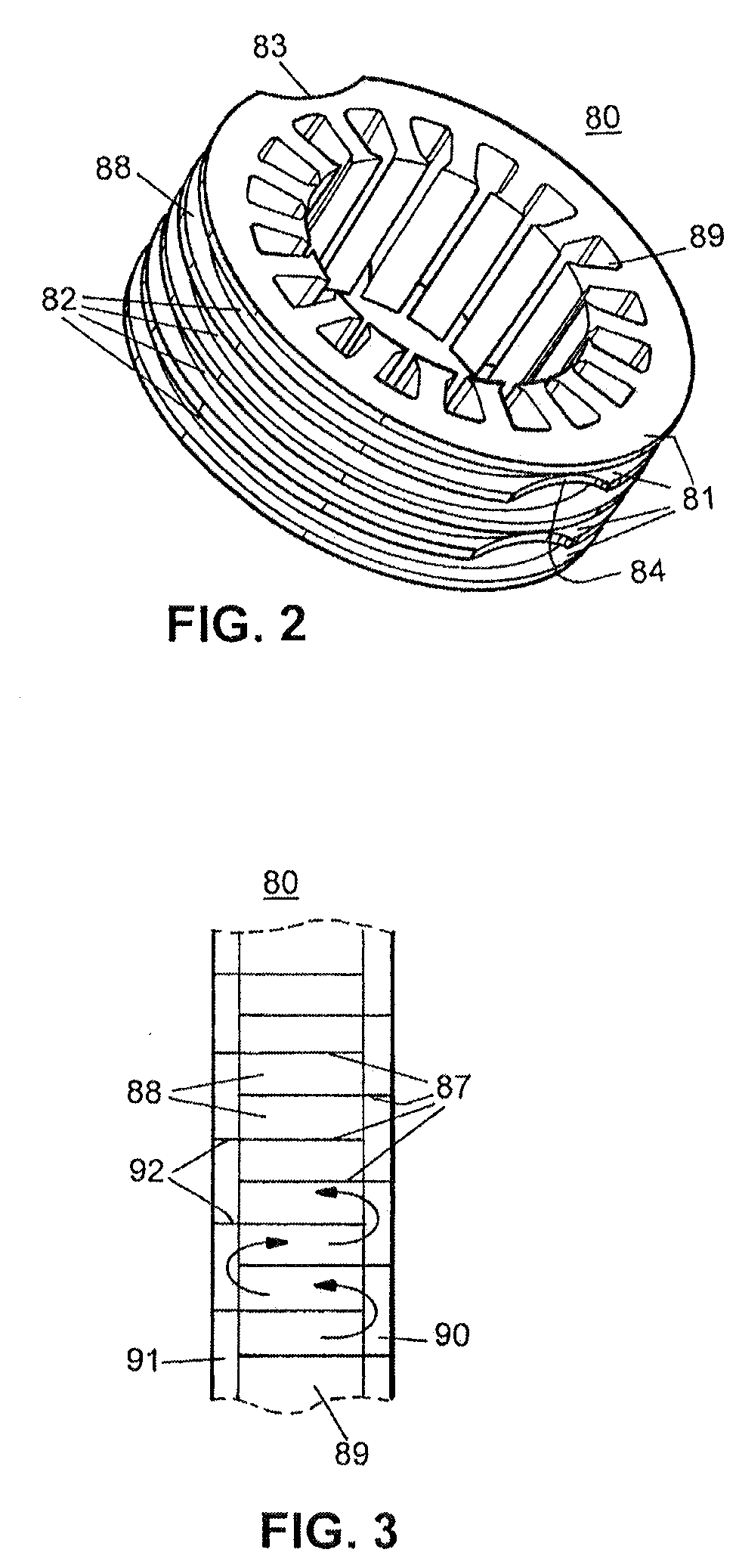Coolant Flow Channel Arrangement for a Fluid Cooled Electric Motor
a technology of fluid cooling and flow channel, which is applied in the direction of dynamo-electric machines, supports/encloses/casings, magnetic circuit shapes/forms/constructions, etc., can solve the problems of uneven cooling and lack of adequate heat transfer to the cooling medium, and achieve enhanced thermal conductivity and sealing
- Summary
- Abstract
- Description
- Claims
- Application Information
AI Technical Summary
Benefits of technology
Problems solved by technology
Method used
Image
Examples
Embodiment Construction
[0022]FIG. 1 is across-section view of an electric motor cooled by a coolant medium in accordance with an embodiment of the present invention. The electric motor 10 has a motor housing 20 and housing end covers 30, 40. A motor shaft 50 is rotatably mounted in bearings 60, 61. A motor rotor 70 is located in a non-rotating manner on motor shaft 50, and rotates with the motor shaft 50 concentrically within a stator 80. The stator 80 includes axial slots in which stator windings 85 are located. The stator windings and the windings of the rotor are electrically connected to external power wires in a conventional manner, not discussed further herein. The motor housing includes a coolant inlet port 90 and a coolant outlet port 95, discussed further, below. The electric motor 10 includes several o-rings 25 for sealing the coolant passages in the assembled electric motor against coolant leakage between the motor components.
[0023]FIG. 2 is an oblique view of the stator 80 illustrated in FIG. ...
PUM
 Login to View More
Login to View More Abstract
Description
Claims
Application Information
 Login to View More
Login to View More - Generate Ideas
- Intellectual Property
- Life Sciences
- Materials
- Tech Scout
- Unparalleled Data Quality
- Higher Quality Content
- 60% Fewer Hallucinations
Browse by: Latest US Patents, China's latest patents, Technical Efficacy Thesaurus, Application Domain, Technology Topic, Popular Technical Reports.
© 2025 PatSnap. All rights reserved.Legal|Privacy policy|Modern Slavery Act Transparency Statement|Sitemap|About US| Contact US: help@patsnap.com



